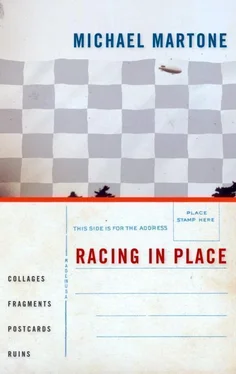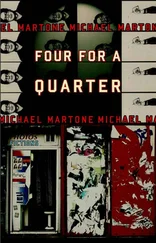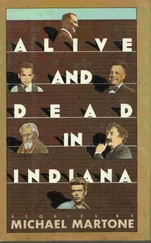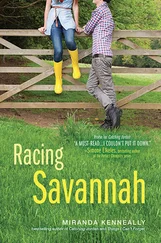So after the birth of my sons, I gained a different kind of weight. Where my wife had come equipped with organic cavities to host the burgeoning other, I had to make do with these artificial blisters-the Snuglis, the papoose cradle boards, and canvas backpacks-girded to my body by contraptions of harness tack and strap. I had a baby sling, an ingenious device that looked and was worn like a Confederate soldier's bedroll. I draped it over one shoulder and it rode around the opposite hip, and then across the back. The sling was even made out of sturdy striped ticking and expanded like a kangaroo's pouch to allow the baby to ball up inside the enveloping folds. The tug of gravity then cinched tight, suspending the joey in this simulated womb. I could not resist rubbing this new belly of mine, massaging this living dead weight that only occasionally stretched, compressed beneath the smooth skin of fabric. How my body was contorted. And how I contorted my body simply to bear this childbearing. I discovered the shelves and hooks, the nooks and ledges of my anatomy to shift the baby about, not hot potato so much as a slippery, springy sack of spuds. My hips. My shoulders. My lap. My elbow's crook. Any port in a storm. I piggybacked. I made a swing of my distended arms. The baby rode my butt, my hands behind me, the laced fingers saddling his behind. I was, during the infancy, a declension of containment-hold, held, holding. Even when exhausted I could not shed this limp limpid. On my back. The baby bedded down on my front, bore down, bearing his full and concentrated weight asleep on my belly.
It isn't hard to make the leap. The literal weight that must be borne comes to stand, in a very solid way, for the metaphoric tare a parent incorporates. I was weighed down and weighed down. As a father I grew grosser by the day, by the ounce.
3
During the nine months my wife was pregnant with our first child, I gained twenty-five pounds. After he was born, I didn't lose the weight and actually gained twenty-five more pounds during my wife's pregnancy with our second son five years later. I like to think of it as sympathetic pregnancy, my body so in sync with my wife's that I matched her transformation pound for pound. My empathetic sensibilities did not extend, thank goodness, as they sometimes do, to experiencing a parallel brace of Braxton-Hicks contractions or a bout of morning sickness. It might be that I lacked the imagination to actually rewire my body's endocrine system to that degree of reproductive fidelity. I simply grew.
The weight did settle on my belly. As my wife grew rounder so did I. 1 suffered only friends and family, even while they admired and approved of the sensual fleshing-out of my wife, aghast at my own transforming body. "Oh that," I said, "the couvade," invoking the French for the phenomenon in order to (what?) make the weight gain arty or legitimate or scientific or, at the very least, explainable.
Couvade translates as the "hatching" or "nesting" and was first applied by anthropologists upon discovering cultures where husbands performed ritual renditions of labor in their own dedicated hut while their wives wailed for real in a hut next door.
It helped to bring up sympathetic labor as the reason for what was happening to me, to my body. We like to believe that we have control over our bodies, and for the most part we do. We control our bodily functions, command sleep, order movement. To exercise is to take one's body for a walk. But pregnancy puts a lie to such neat hierarchy of control. In pregnancy the body takes you for ride. You are at the mercy of the chemical equations coursing furiously through the body. The body's biological imperative. The physical results are stunning, sudden, and miraculous. Of course that is to say the "you" to whom the highjacking of pregnancy happens is not every "you." It couldn't really happen to me. I could only witness this metamorphosis. And, I guess, while witnessing, I wished to let myself go, to let my body go. Three-fourths of a year when new life is imminent allows the old life to be in abeyance. I let go without knowing I let myself go. I like to think I allowed my body to surprise me with my own generative process. But I believe my body did this on its own. The surprise was real.
To this day I still carry those extra fifty pounds, the current weight of my younger son. I carry the mass equivalent in size to this other person still. I have no other explanation for it. Sympathetic, my own gravidity.
4
The cravings were real but not at all original. Not pickles but ice cream. That fall we drove to Davis Square and Dave's Ice Cream and ordered dishes and cones of scoops and dips after test-tasting the new flavors, working our way through the tubs in the glassed-in frozen cases, collecting the tiny plastic spoons like charms. We drove to Harvard Square that fall, to Herrell's, who was also Dave but when he sold Dave's signed an agreement to stay out of the ice cream business. Dave loopholed his way back into the business on the strength of his family name. We were in a family way and craved ice cream. We craved chocolate ice cream, the subspecies of which (Dutch Chocolate, Belgian, Chocolate Fudge, Brownie, Chip, Double Chocolate, Mousse, White, Dark, Chocolate Chocolate Chip, Chunked, Cookied, Malted, Marbled, Mandarined, Mochaed, Minted, Plain) were as numerous as the other individual varieties found in the rest of the flavor spectrum. That fall we drove to Central Square and ordered ice cream at Toscanini's, asked that the various candies and cookies and fruit and nuts be mixed into our choice, folded together on a refrigerated marble slab. It looked, as the mixing commenced, as if the ice cream was consuming its ingredients, an enriching metabolism. We brought home pints and gallons of ice cream and didn't bother to decant the contents but spooned the confection directly from the container, producing deftly curling glazed and glistening waves of frozen ribbons rolling up into our mouths.
I marveled at the sculptural suggestiveness of this media. I loved how the shop scoops welded together. The balled ice cream towered, mounded, slumped into Willendorf Venuses atop a cone, how that hood ornament of ice cream modeled the rounded belly, breasts, and hips of a pregnant woman. Ice cream could be sculpted into bodies, and ice cream sculpted the bodies that consumed it. It layered and larded the articulated underlying skeleton. That fall, the fall of ice cream, under its influence and in its hands, we became these spherical corpulent snow people, artist's models. That fall our bodies bulged and bubbled. We became these B-shaped beings.
5
The story goes that my father, born at home, was thought to be, until the actual labor and delivery, a tumor. My grandmother, fearing the growth was a growth, ignored the symptom in order to ignore the expected diagnosis, and steered clear of doctors, denial being the only remedy she believed available to her. One hears of things like that happening, variations on a theme. The obese woman whose massive body masks to her and the world this other body swaddled within. And then there are the tumors that are, in fact, tumors but tumors masquerading as bodies. They are themselves the remains of other bodies of cells commencing on a reproductive journey only to lose interest-hair balls, sets of teeth, or even the mummified ghost of a fetal twin absorbed by the other in the womb, pregnant pregnancy, nesting nesting dolls. The belly and the womb may become confused. The swelling of one by all appearances identical to the other. There is the impolite inquiry of the heavy woman as to her due date. A man's beer gut distends in meticulous imitation or vice versa. And there is a further variation of our discomfort in our own skin. Shame, embarrassment, blush-this burning blindness of the body and it costume of skin. You hear of the impromptu birth in the high-school locker room, the bathroom at the prom. The student who abandons her baby after a full term of concealment. No one, when interrogated in retrospect, suspected, the complete camouflage of the body by the body. No one was able to distinguish the metamorphic growth spurts of an adolescent from those spawned by the spawn within. The body is so much about the Body. It grows, and it grows.
Читать дальше












